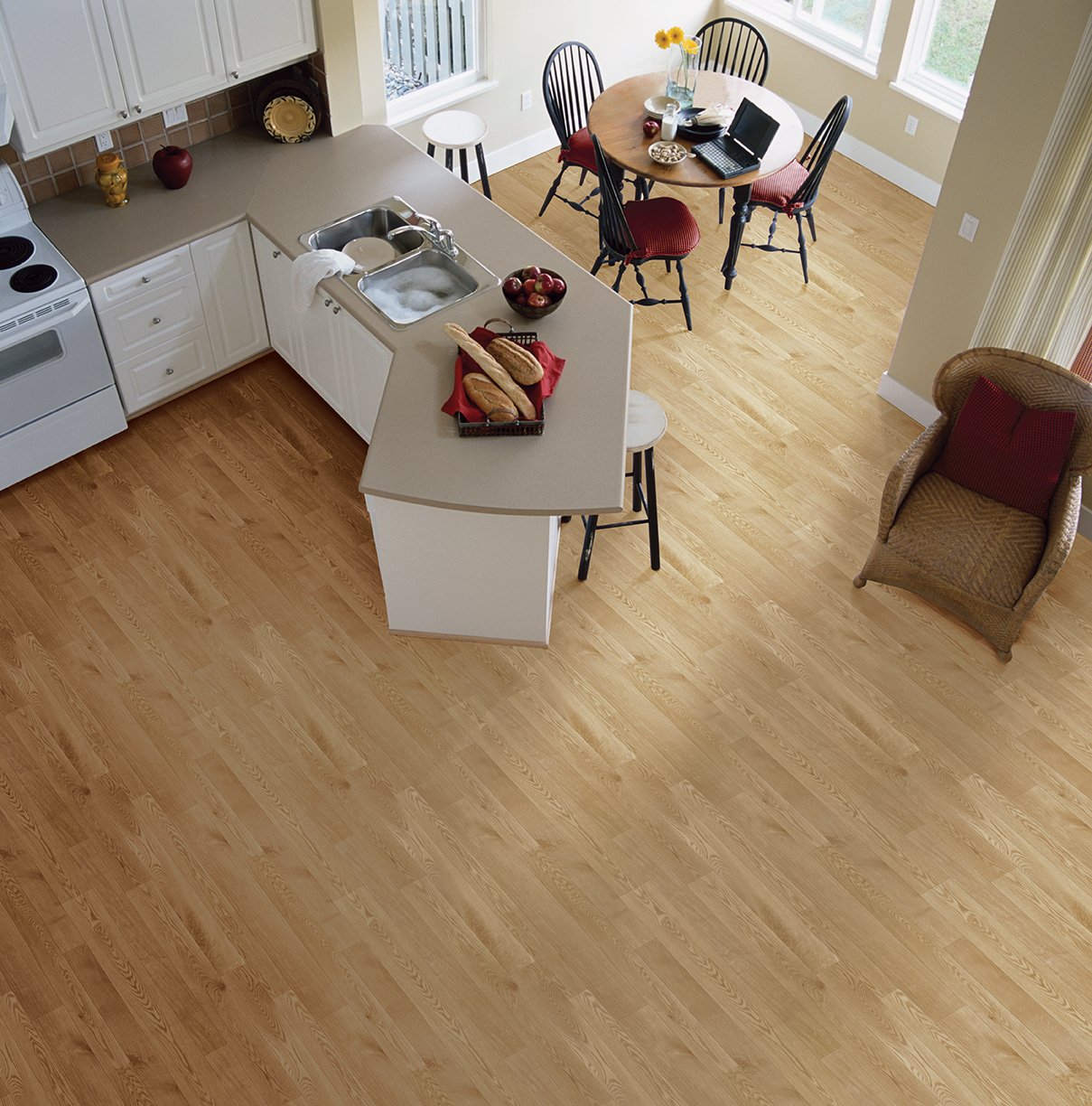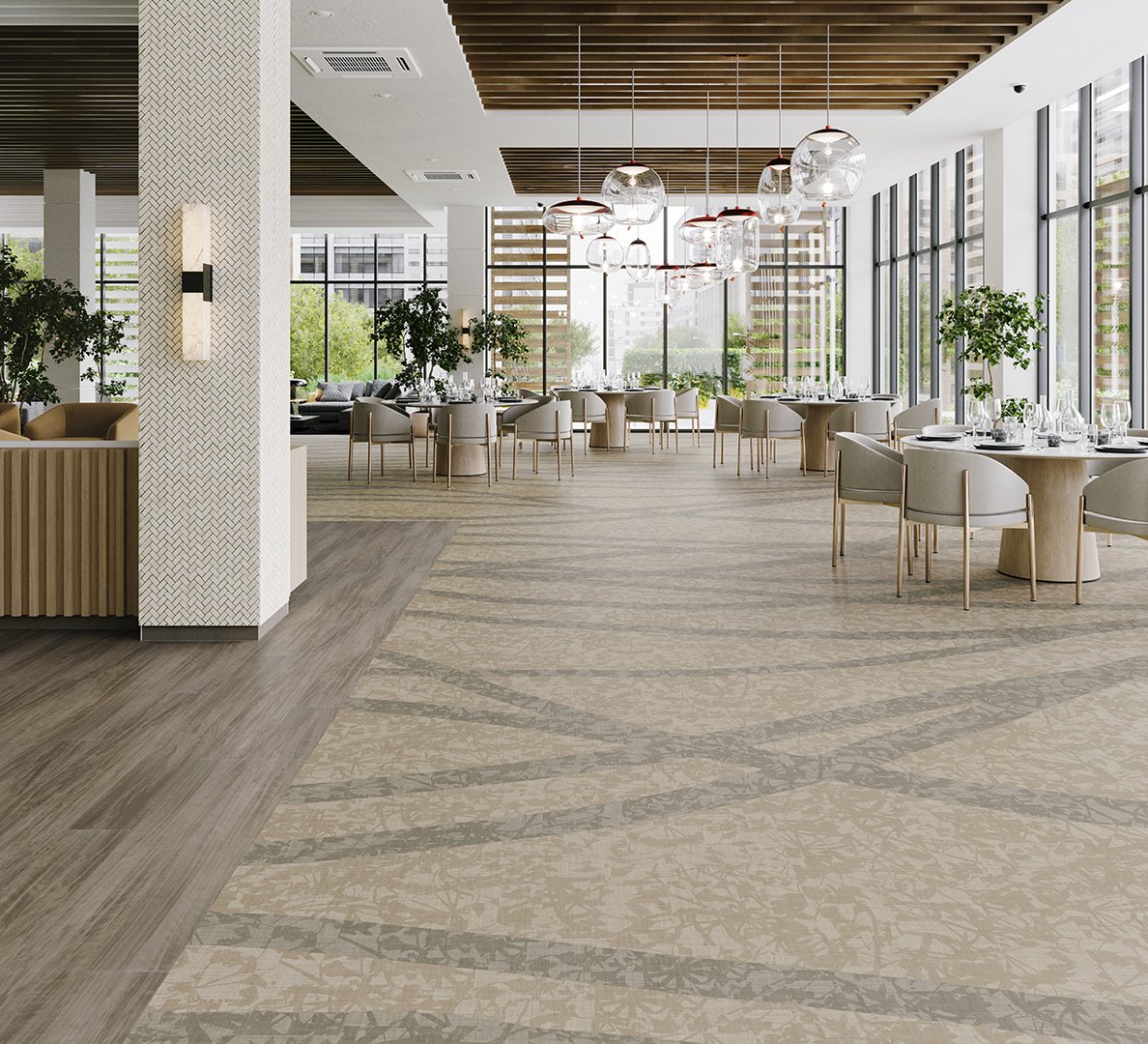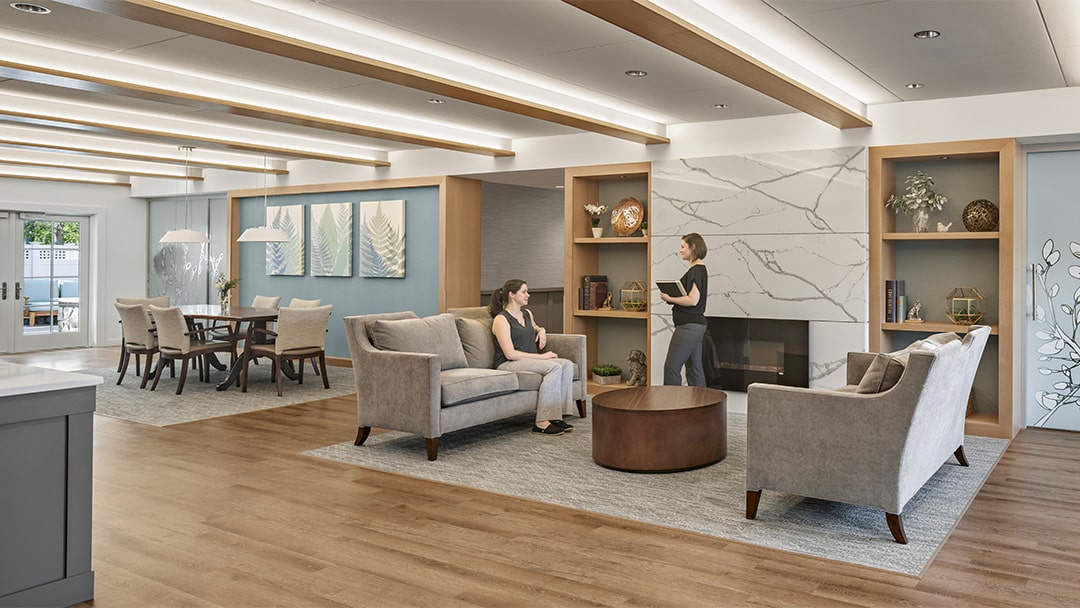The importance of patient-centered care models for senior living has become increasingly apparent in recent years and will become even more so in a post-COVID-19 world. I have over 20 years of working with designers and end-users in addressing the healing environment and have never seen such intense scrutiny pertaining to getting it right with interior selections for these specific facilities.
Safety for the both resident and staff and the manner in which loved one’s interact is rapidly evolving. We find top of mind throughout the facility is a heightened focus on infection control and added safety criteria for staff. It is an interesting intersection of design practice and services.
We’ll review design elements of various care models of senior living that are included in the Facilities Guidelines Institute Guidelines as well as traditional nursing facilities to understand what to include when designing these models for a person-centered care facility with improved outcomes as well as review implications for the future.
The Different Types of Facilities:
- Residential Care Model
- Household Care Model
- Apartment-style Community Model
- Traditional Nursing Home
Residential Care Model
The residential care model for senior living is really that – a house. It is a home that has been converted into a care home.
Sometimes these are called personal care homes or long-term care homes. With this model, there is a variety of names and a variety of licenses that are used. Keep in mind that residential models can be new construction as well as renovations.
Residential typology typically is located in a single-family residential neighborhood and has a lower resident-to-caregiver ratio than the household typology. The small nature of this setting provides for strong personal relationships between residents and staff.
Special Design Considerations in a Residential Care Facility
A residential model has single-family home character, and it usually is, in fact, a single-family home. Most often, it serves four to five residents, but it can serve as many as eight. (Note: there are communities in Colorado that serve up to 30 residents that are considered residential models.)
Most of the time we design from an assisted living side and into the institutional setting, then into the facilities side and into the residential side. This model design starts at the exact opposite. This typology comes from the residential side and moves into services, so it has a different character and thought process than is typically started with in the design world when planning a senior living facility.
The outcome is the same, but the overall intent is very different. For example, a project may not have an assisted living or institutional certification to it in terms of licensing; instead, it could have a license for a group home for unrelated adults who all have dementia, but it could also have one for developmentally disabled or other types of residents.
One thing to keep in mind that often gets overlooked when designing a residential care model is having a way for soiled and dirty laundry and materials to be transported in a way such that they are not dragged back through living space.
More than ever, ability to clean flooring, upholstery and other high touch surfaces will be a priority. Design intent here could include more commercial type of products that may have not been considered in the residential facilities prior to COVID-19.
Additionally, access to the outdoors is critical. In a residential care model, it’s possible to create a residential feel through a porch area that is also secured by fencing.
By creating a space off of the living or dining area, people have the opportunity to come out and enjoy the space without feeling as if they are locked in or locked up, which eliminates one frustration residents often have of not having freedom of movement. Keeping the sills of the windows fairly low can maximize the views not only for the residents but also for the staff so that they can see the residents and come to any aid necessary.
Design Implications for the Future of Residential Care Facilities
Studies show that smaller environments and consistent staff provide improved outcomes. One of the issues we’ve seen with COVID-19 touches on a living wage for workers so that workers can work at one job consistently rather than two or three jobs, which moves them from facility to facility and increased the risk of exposure. This is not just for COVID-19; it also applies to influenza and other infectious diseases.
Staying on this point, home owners and their caregivers will find it beneficial to maintain consistent staff in order to deliver consistent care. WIth COVID-19 comes new demands upon facilities such as, defining and implementing an infection control program (IPC).
The CDC recommends that a facility identifies an individual with training in IPC. Although this consideration is recommended for a large nursing home, the care and safety of the residents must take precedence. The CDC offers Continuing Education pertaining to IPC. Awareness and training by an individual regarding IPC protocol can bring added value to their position and possibly justify a higher wage.
Looking at design intent for these homes, COVID-19 will bring additional considerations pertaining to HVAC and the systems that deliver and exchange airflow. Generous windows bring light into spaces and in temperate climates opening these windows for natural air flow can only benefit those in the home. Other considerations that may assist with air exchange include whole house fans. Modern whole house fans keep cooling costs down and allow for complete air exchange throughout the home.
A residential home is a family. The goal is for it to be as close to the nature of a family as possible – while they can disagree, the residential model gives the opportunity for the comfort of a family, which reduces isolation, anxiety and stress.
Household Care Model
The household model is slightly bigger than the residential model and has more variations to it. Typically, there are 10 to 16 residents living in a household. This model comes from more of an institutionalized mindset and morphs into a smaller, more person-centered care model.
The household typology typically is located in residential neighborhoods or on the campus of a larger retirement community and has a smaller number of residents than the apartment-style community typology.
The household typology provides care in a setting with a residential arrangement, scale, and character and offers a communal atmosphere that fosters group cohesiveness, companionship, and nurturing relationships.
Special Design Considerations in a Household Care Facility Model
The household model is slightly bigger than the residential model and has more variations to it. Typically, there are 10 to 16 residents living in a household. This does come from more of an institutionalized mindset and morphs into a smaller, more person-centered care model.
This often is located in residential neighborhoods or on the campus of a larger retirement community and has a smaller number of residents than the apartment-style community typology. The household typology provides care in a setting with a residential arrangement, scale, and character and offers a communal atmosphere that fosters group cohesiveness, companionship, and nurturing relationships.
A household model can have all one level of care, or it can have different levels of care all within the same footprint. For example, within one footprint, it is possible to have households that are memory care, assisted living memory care, skilled nursing or even skilled nursing memory support.
Even better, the licensure can be adapted to accommodate the changing needs of the community. This adaptability within the footprint of a facility is not something we currently have in the more institutional care models.
Often when you would come through the front porch of a household model, you would ring the bell or knock on the door – this tries to emulate all those little nuances of home. Household models should also have controlled spaces for outdoors and views that allow daylight to come through the interior spaces.
Household dining services is part of the challenge of a household model, but it’s worth the challenge. You really have to plan this up front in your functional plan.
Food sourcing and supply deliveries is a challenge but does not necessarily cost more. This is all related to planning and how the model is staffed. If you try to staff this model as a traditional setting, then it is not going to work out as well, but if you take the time to evaluate and staff according to the specific needs, then it can be done without extra cost. This is something critical to consider in your functional planning.
We also know the distribution of raw vs prepared food and maintaining food temperatures can actually be a positive in a decentralized kitchen. So, your staff is going to be engaged in cooking and serving rather than being involved in distribution.
Some people call this a homemaker. A homemaker might be involved in both the food cooking as well as household cleaning. Some projects use a universal worker that is involved in food service, environmental service as well as personal care.
There are a variety of ways to staff and make this successful. The key is to evaluate ahead of time and put this in your functional plan. No matter which you decide, the whole idea is that the kitchen is not just a place where you come to get your food, but it also provides a place for conversation and opportunities for activities – cutting vegetables, making things – normal life things that people would like to participate in.
Ten tips and considerations to help guide you when specifying flooring for
Senior Living and Memory Care.
Design Implications for the Future of the Household Patient Care Model
Just as discussed in the Residential Care Model, finish selection and the inclusion of IPC protocol will assist in further creating a safe environment for residents and those that provide care.
Additional consideration can be given to technology interfaces that allow for simple communication between those in the home and friends/family that would like to virtually visit as well as enhancing the interaction between caregiver and resident.
These technology interfaces will be required to be fluid and easily used by all residents, no matter their tech awareness. To this point, a simple internet search - “apps for senior care interaction 2020”, yields results of products that meet these criteria...easy to use, affordable and APP driven. APP driven technology allows for family members to connect using their familiar technology while keeping in touch with their loved ones in the residence.
Smaller environments, whether those are separate or combined in larger communities, lead to improved outcomes as does consistent staff.
In order to rebuild trust in senior care, care models will have to be re-evaluated and demonstrate positive outcomes for people. Measuring positive outcomes are key. Post-occupancy evaluations are talked about a lot and rarely done, but we need these evaluations so that we can all learn and make changes and get better.
AVERY HEIGHTS ASSISTED LIVING COMMUNITY Hartford, CT
Amenta | Emma Architects , Image by Robert Benson Photography
Apartment-style Community Model
Apartment-style is more of a hospitality model. It has centralized services such as a gym, art classes and a central dining room. You can also look at this like a household with a centralized kitchen as well.
Design Elements of the Apartment-Style Community Model
Direct visual and physical access to the outdoors is important and usually included; however, there are many apartment-style community models where there are great outdoor spaces, but the facility locks the door because it is not within direct visual site of where the staff can see people, which makes it a concern for safety.
Again, this is where functional planning is critical – you want to really think through your plan and how the staff can see the residents while they enjoy the outdoors. When residents are not allowed outdoors, it’s not that residents aren’t allowed to go outside because the staff doesn’t care; it’s because they are trying to keep the residents safe.
Facilities are often understaffed and underpaid, and they have to have a direct line of site to keep residents safe. Functional planning is critical to being able to utilize outdoor spaces in a way that has a positive impact on residents.
The biggest difference in the apartment-style community vs the residential and household models is the centralized kitchen and communal dining. It’s often one large-scale dining room.
Adding small options like being able to paint a color in one of the rooms and providing private bathrooms encourages positive outcomes. When residents feel as if they have choice and dignity, their outcomes are better.
A typical apartment-style community model floor plan is “V” shaped with long wings of residential rooms down long corridors and community spaces in the connecting center. One issue with these types of plans is that residents have to walk so far to get to places such as the dining room. Another issue is that the staff must walk miles and miles to provide care.
The idea of smaller settings is important to both the residents and the staff. You can still do a community model and even a central kitchen if it works better but dividing up space and having shorter corridors is really the recommended direction to go.
Design Implications for the Future of the Community Care Model
Implications of the future for this model include re-evaluation of the care models and evaluation of resident acuity. Recently, we have seen a much higher acuity in assisted living that we ever saw before, so that evaluation is very important to understand it.
Development of smaller environments within larger existing settings will continue to be important. If you are looking at the acuity of the residents, their needs, and the resident walking distances of the residents and the staffing, then we will see a shift in how assisted living is designed in the future.
Again, consistent staff remains a crucial element to positive outcomes.
Also, if the adult child is more aware of things like care services, quality and cost, then they can ask the right questions to evaluate the community to see if it meets the right criteria for the needs of their loved ones.
Traditional Nursing Home
A traditional nursing home is an institutional model where everything is centralized. There are double occupancy rooms, little to no access to the outdoors or natural views and has a centralized commercial kitchen and central dining room. Basically, traditional nursing homes were designed like a hospital with double-loaded corridors and were meant as a transition, not for people to live there.
Typically they take care of the diagnosis, but they don’t take care of the person. What we mean by that is 90% of the person is not the diagnosis – if we only take care of the diagnosis, we miss 90% of the person – the food they like, the clothes they wear, the activities they enjoy, etc.
A traditional nursing home model does not take all these individual nuances into consideration, and as a result, it has not proven to be an effective place with large numbers of positive outcomes in permanent residents.
However, there is an opportunity to rethink and reposition existing institutional settings into person-centered household models. Many influential design bodies are actively updating guidelines across market segments to include pandemic scenarios and what impact they have on shared space. For instance, Facility Guidelines Institute (FGI) has pushed out their Draft for 2022 Guidelines for the workplace. Here, you can review the drafts and comment.
Design Implications for the Future of Nursing Homes
In the future, we will see a re-structuring of care models to take care of the whole person and not just the diagnosis by moving to hybrid models with smaller communities.
It’s possible that testing policies will be necessary before allowing someone to come into a larger institution or traditional setting. People may believe that COVID-19 is the only time this has happened, but every flu season, institutions have had to close or restrict visitors.
With the devasting effects we’ve seen with COVID-19, it’s possible we will see mandatory testing before someone is allowed access. There are other diseases that causes huge issue in nursing homes, such as e coli, MRSA, c. diff.
All of these are issues that already happen; it’s just that COVID-19 brought it front and center, so we will see changes because of COVID-19 on both the federal government side as well as the provider side.
Consistent staff once again will become increasingly important as we re-evaluate this model.
Function and Form: The Challenge of Doing Both in Patient-Centered Care Models
When designing for senior living, specifiers are challenged more than ever to consider both function and character of the space. For example, designing with character looks at appearance, comfort, human scale, home style, color, etc., but we also need to look at the function of each object or surface to make sure things like the seat height, the back height, and the arm height of a chair is appropriate to serve the unique needs of residents.
We need to use the value of color contrast on surfaces appropriately to help residents distinguish changes instead of potentially creating problems. For instance, selecting the wrong colors or patterns on the floor can lead residents to perceive holes, a change in depth that is not there, wet spots or with a busy pattern even create a vertigo effect.
Cleanability and disinfection are going to be incredibly important moving forward. Designers will look for more durable fabrics that can withstand new maintenance regimines. The cleanability and disinfection of all surfaces has come under tight scrutiny.
Ventilation is also going to be a key concern moving forward in a post-COVID-19 world. Pay close attention to HVAC systems. Long gone will be the days of using wall unit A/C systems with limited filtered air for lower cost.
The Built Environment and What “Safe” Feels Like
Covid-19 is changing our lives and the future of our built environments faster than we can blink. We once lived in a world where communal gathering spots, places like WeWork and family style restaurants were taking over and seeping into all areas of design including healthcare.
One thing that hasn’t changed with the pandemic is the need for comfort, love, care and the desire for places we visit/work/live to convey the idea of safety to us maybe now so more than ever before.
One of the major contributing factors to feeling safe in a space are the materials used. As designers and business owners become more conscious of the materials they use in their spaces and the effects they have on patients, we’re creating the future of healthcare and setting the standards of making better spaces.
Bloom is a new product we launched at Mannington Commercial centered around the idea of what flooring could/should be like in a wellness space and how flooring contributes to the overall feeling of a space. For every square yard purchased from the Bloom Collection, Mannington Commercial is donating 3% of the purchase price to Mercy Medical Angels in support of their mission.
Learn about our partnership with Mercy Medical Angels




